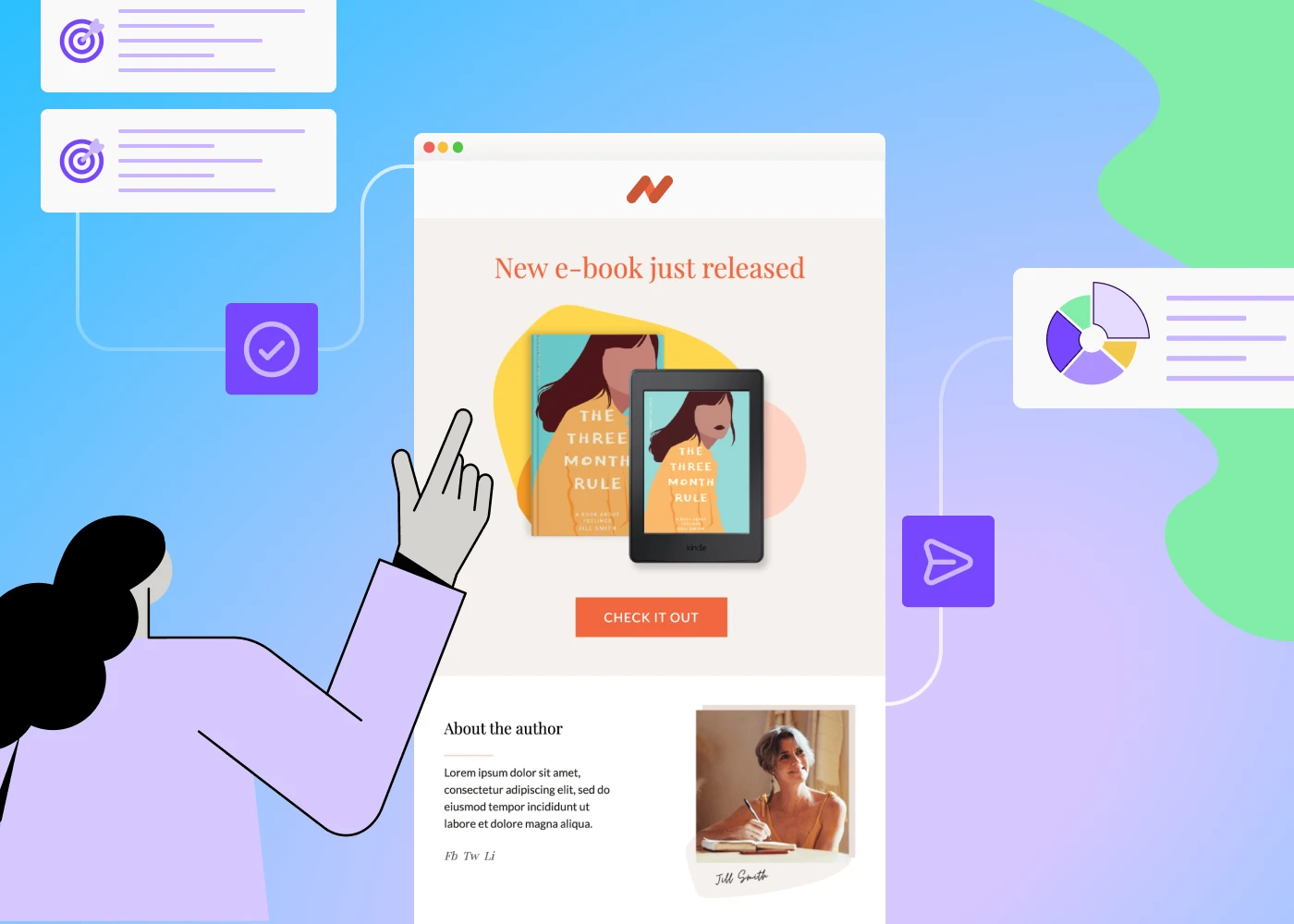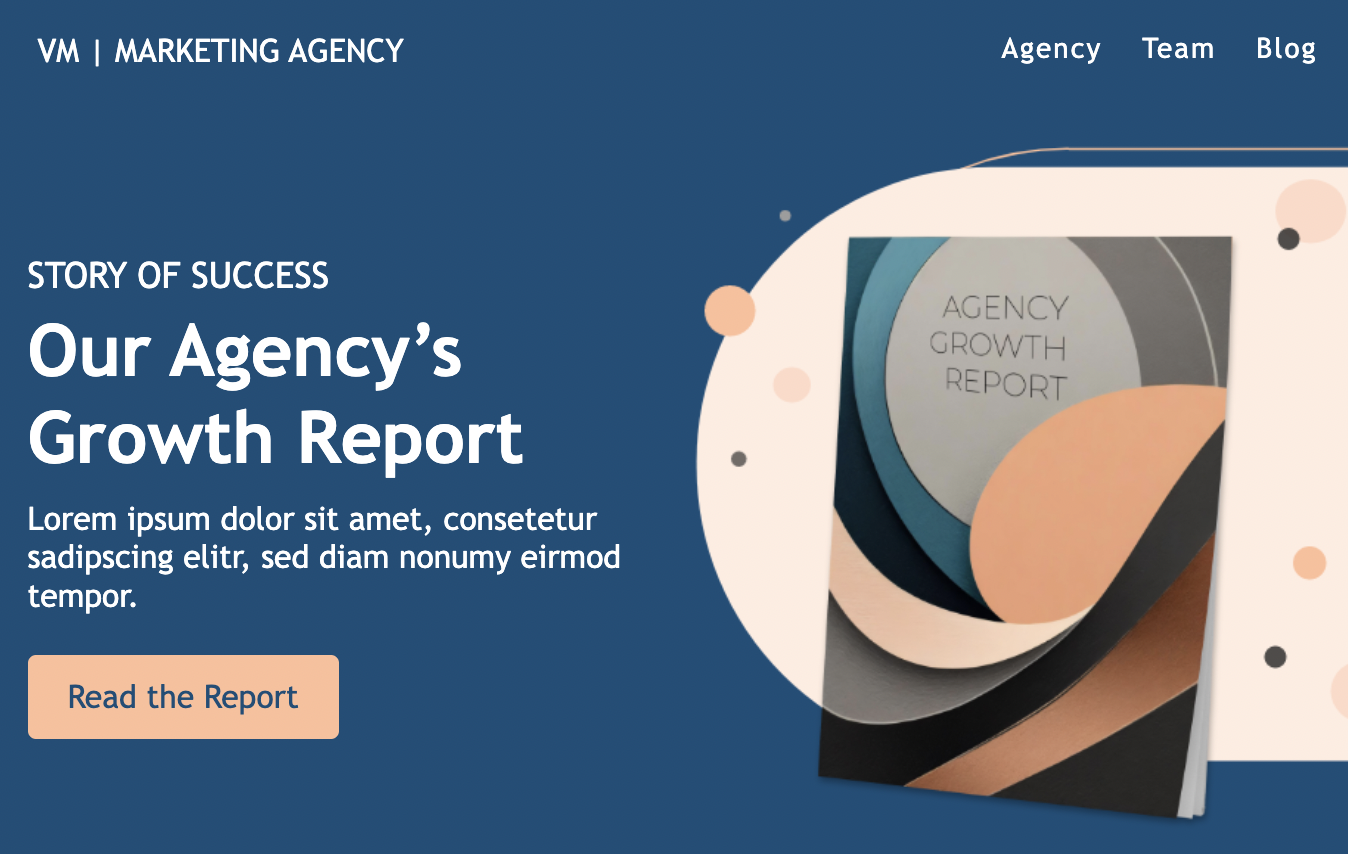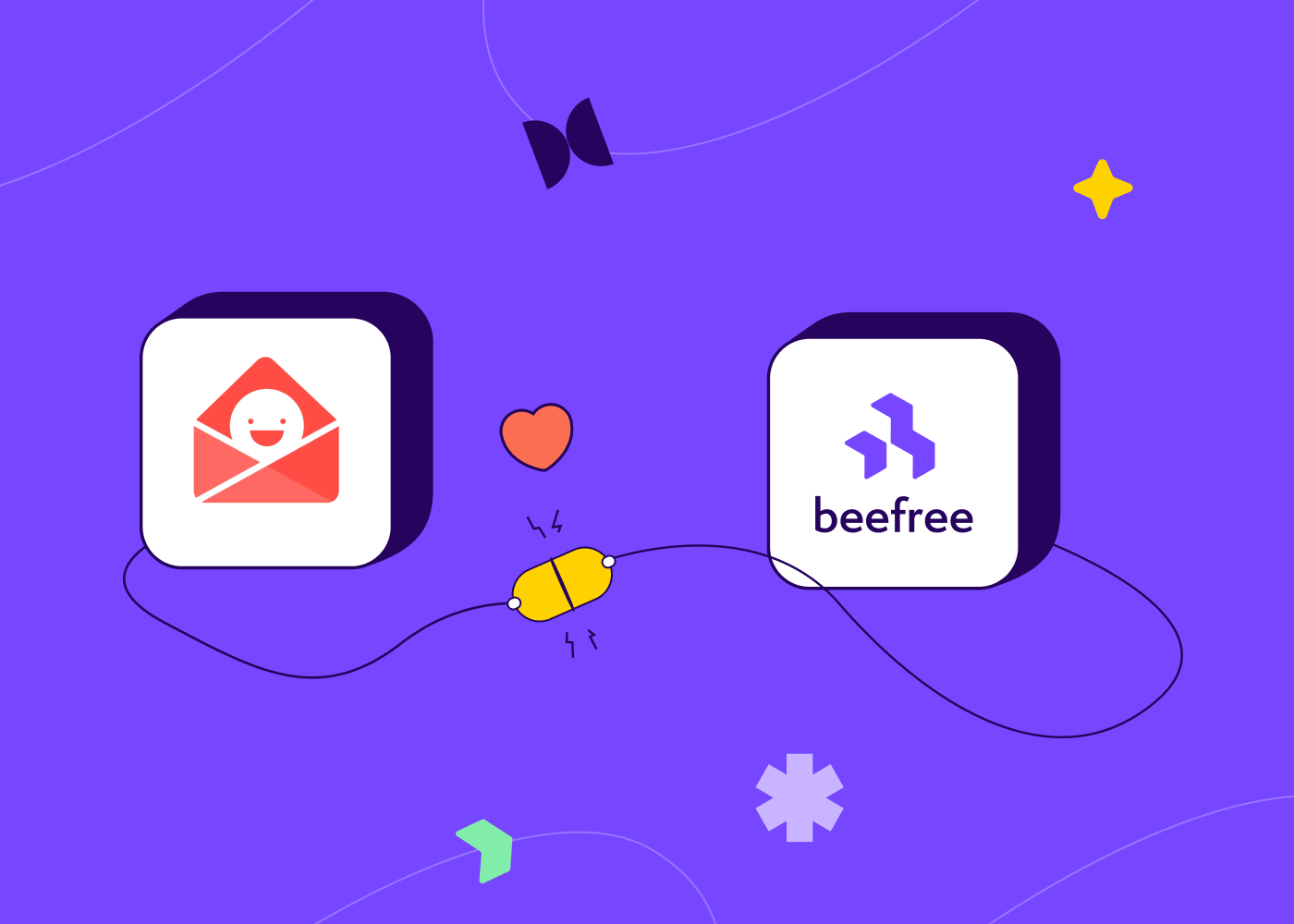It’s no secret that newsletters are a powerful aspect of successful and impactful marketing strategies. With 81% of marketing professionals stating that email newsletters are their go-to type of content marketing, deciding whether to create and send regular newsletters to your clients is a no-brainer.
But what about your staff? Could employee newsletters be as effective and compelling for your employees as they are for your clients? The answer is “yes”.
Before creating your first-ever internal company newsletter, read our guide. Here, we’ll reveal the benefits of internal newsletters, the key elements to include, and how to create an internal newsletter for maximum reach and engagement.
According to a study by Ragan Communications, 83% of employees prefer receiving company news and updates via internal email newsletters.
It’s important for businesses to invest in internal newsletters because they play an important role in employee engagement, encourage better communication, and promote trust within the company. They represent an efficient way to share information, endorse company culture, and encourage employees to learn from one another.
Here are just some of the things you can expect to achieve by writing great company newsletters:
Enhanced staff commitment, motivation, and retention:
By using newsletters and emails to regularly engage employees in company news, updates, events, and celebrating individual accomplishments helps employees feel like essential stakeholders in the success of the company. This is more likely to help them feel involved in the company's success and be more open to providing feedback and contributing to the company beyond the day-to-day responsibilities.
Higher productivity:
When staff feel more involved and engaged, productivity follows. Gallup reported a 21% increase in productivity from highly engaged teams. Put simply, engaged employees are prepared to go above and beyond to complete their goals.
Better collaboration:
Regularly keeping your entire workforce in the loop allows them to communicate and collaborate more effectively.
How to Craft Compelling Internal Company Newsletters
Understand your audience's preferences
Your workforce likely consists of a range of folks varying in expertise, backgrounds, age groups, and interests.
So, to make sure your newsletters are read and engaged by as many people as possible, it is important to offer something for everyone. Which is, of course, easier said than done. This is where surveys and questionnaires can help. Before you create your internal newsletter, send out surveys asking questions such as:
- How often would you like to receive the newsletter?
- What are the three most interesting/useful/important topics you’d like to read?
- Would you be happy to be featured in the newsletter following a project accomplishment?
- What are your interests?
- Are there any resources you’d like for us to include in the newsletter to help support your everyday work?
By involving your employees in creating your email newsletters, you can curate the newsletter specifically for their needs. Consider segmenting your audience and sending department-specific newsletters if you notice various interests and needs across departments.
Craft relevant and engaging content
Now, for the most crucial bit: your newsletter’s content. We mentioned how vital it is to use simple, straight-to-the-point language. This, though, doesn’t mean that your content should be bland and dull. For your newsletter to hit the mark, it must include compelling, relevant, and insightful content that your audience loves to read.
Your content needs to not only provide information but also engage your audience if you want to develop a sense of community within your organization. It is also a good idea to seek feedback and revise your content strategy over time, as you want your content to stay fresh and captivating.
Align content with company values and goals
Whatever you decide to include in your newsletter must align with your company’s values, mission, and vision for the future.
Everything about your newsletter should be an extension of these aspects – from its tone of voice to its visuals. This can help reinforce your brand identity and help foster a strong company culture and sense of community among your readers.
Develop a budget for newsletter expenses
Who is going to manage your newsletter? Will you handle it internally or outsource it to an external party? Regardless of which you choose, there will be a varying degree of costs associated with it. To keep track of them, develop a detailed budget – preferably using automated tools.
The exact budget will vary depending on your organization's size and requirements. You may have to factor in the costs of email marketing platforms, content creation, design, analytics tools, employee time, and potentially staff training.
One highly effective option for budget management is to utilize budget management software. These tools are designed to streamline your expense tracking process, reduce the margin for errors, and allow you to effortlessly keep a close eye on your newsletter-related expenses.
By combining budget tools with other monitoring tools, you’ll get a good sense of how your internal communications affect your business.
Make sure you look at various metrics to measure your newsletter's success. For example, quantitative results like open rate and the number of shares can be checked, as well as more qualitative metrics such as digital survey responses and feedback meetings. This will help you determine how useful your newsletter is and means you can create ROI benchmarks.
Managing the workload effectively
Did you choose to handle your company newsletters internally? Great, but you’ll need to ensure this doesn’t become too time-intensive. In all likelihood, the person (or people) assigned to create the newsletter will also handle other tasks.
With tools such as time and expense management software, you’ll be able to check exactly how much time your employee devotes to creating and running the newsletter. Does it seem insufficient, and the content is starting to suffer? Or are they spending too much time on it and not focusing on their core activities?
Tracking all this helps your employees work more efficiently, stay on top of content planning, and keep up with their other tasks.
Choose a format and posting frequency
If you’ve asked your employees how often they’d like to receive the newsletter, you should now know the ideal frequency. Suppose 60% of people said they’re happy with one monthly newsletter, while 40% would like to read it weekly. Go for a middle-ground alternative, such as bi-monthly.
You can use email marketing automation to send newsletters at optimal times, allowing for factors like employees working in different time zones. This allows your team to focus their energy on content creation.
The optimal time to automate your newsletters is midweek mornings, as Mondays can be hectic for workers catching up after the weekend, and on Fridays, they may be less engaged due to the upcoming weekend. Mornings are usually best, as that is when most people check their emails.
Some things you’ll want to include in your newsletters are unpredictable, such as employee achievements. However, other company newsletter ideas can be planned and outlined in advance, such as details on training sessions, a new leadership team manager joining the company, and company events.
Consistency is extremely important when it comes to maintaining audience engagement. Creating a content schedule for planned content will allow you to deliver valuable information regularly and reliably.
Continuously refine based on feedback
Maybe you think you’ve been sending out the most amazing company newsletters using the best platforms, but how do your readers feel? Ask them! Your audience’s feedback is one of the most precious tools you have in refining and improving your company newsletters.
Whether it’s about the content, the frequency, or the length, keep asking for feedback, suggestions, and input. You can make this a fast and smooth process by leveraging automated feedback software, such as SurveyMonkey and Typeform.
Your audience will likely appreciate being asked for feedback as it will make them feel that their opinions are valued and that the content is being purposefully designed for them.
Encourage reader interaction and sharing
A newsletter with a strong CTA can retain a lot of its potential. So, remember to include a clear and enticing call to action at the end of your email. This should encourage the reader to interact with the content, share it, and discuss it with their peers.
7 Key elements to include in an internal company newsletter
We’ve compiled a list of the 7 key elements you should include in your company newsletter. This will help you form the basis of your internal communications, which you can continue to reform as you explore what works for you and your employees.
1. Easy-to-understand messaging
When writing your internal employee newsletter, leave complexity out of it. Don’t use jargon. Speak clearly and straightforwardly, and try to appeal to as large an audience as possible.
This is especially important if people from different departments with different backgrounds and interests read your newsletter.
2. High-quality images and graphics
The choice of imagery in newsletters takes on an important role. It's about capturing your audience’s attention and making employees feel seen and represented. When curating images and visual elements for your newsletter, it's essential to prioritize content that resonates with your diverse workforce. Including imagery that reflects a variety of backgrounds, experiences, and perspectives can foster a profound sense of inclusivity and belonging among your employees.
Adding interactive elements to an email newsletter can help spark your readers’ interest and keep their attention longer. So, remember to give your newsletter design some thought and include hi-res images, graphics, and other visual elements such as video clips and GIFs.
By including images from all teams and team members, you’ll ensure that your internal company newsletter informs and reinforces a culture of inclusivity where every employee feels valued and represented.
3. Company updates and project spotlights
To get your team’s attention, you’ll want your newsletter to discuss important updates and highlights. Did you recently win an award? Are you going to organize a fun work trip or social event? Have you appointed a new manager for your marketing team? Is there any industry news that might be relevant to your company? Whatever it is, make sure it gets a mention.
4. Training information and helpful resources
Another must-have in your internal newsletter is useful information. This could be anything from the date and time of your next DEI training session to helpful resources about remote work and guidelines on new product releases. Remote work has become increasingly prevalent, and providing guidance and support in this area can greatly benefit your employees' productivity and well-being.
5. Leadership messages and staff contributions
Messages from your company’s leaders and internal shout-outs are two other things you’ll want your newsletter to have. These are especially important if your company has recently gone through something significant or a specific staff member has distinguished themselves in a project.
6. Employee highlights and achievements
Speaking of staff members, regularly include your team’s achievements and highlights. You could refer to a team or department or mention a specific person – it’s entirely up to you.
This practice of highlighting and celebrating employees success is instrumental in making them feel acknowledged and appreciated. It reinforces their sense of value within the organization and contributes to overall morale and motivation.
7. Culture reinforcement and community involvement
Lastly, remember to include a sentence or two about your company’s culture and tie it with anything tangible your readers can do to help the community.
For example, if your company values becoming greener and more sustainable, you could scout for relevant volunteering opportunities in the area and add them to your newsletters. Or, you could mention what your company is doing to lower its carbon footprint and encourage your employees to help you achieve this goal.
Designing impactful internal newsletters with Beefree
If it all sounds like a lot and you’re not quite sure where to start, then remember: you don’t need to do it alone! Elevate your company's internal communications by leveraging the power of Beefree to design newsletters that captivate and resonate with your team. With its intuitive drag-and-drop editor, you can effortlessly create visually stunning layouts, incorporating eye-catching visuals and dynamic content.
Offering a broad spectrum of professionally designed templates, Beefree caters to various internal communication needs, including announcements, team updates, project milestones, and employee recognition. With easy customization options, you can effortlessly tailor these templates to align with your company's branding, tone, and specific messaging requirements.
Sign up for free and start designing!







